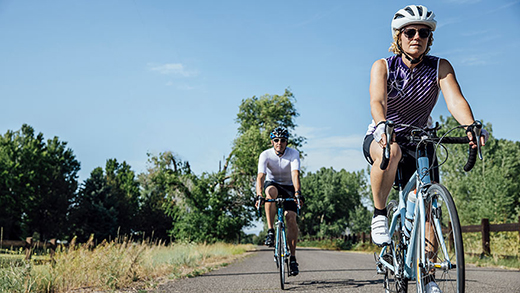How to Treat a Sprain or Strain
July 20, 2023

Injuries happen to everyone. They are caused by participating in sports, recreational activities like hiking, and even by accidentally stepping off a curb wrong. If you experience a sprain or strain, the first few days are often the most painful. Renown Sports Medicine physicians Luis Palacio, MD and Brandon Hockenberry, MD walked us through what to do after an injury.
Listen to Your Body
See a medical professional right away if:
- You know or suspect that a bone is broken
- You are having difficulties putting full weight on a joint of the leg
- Pain or swelling is severe
- There is a sign of an infection, such as redness and warmth in the joint
The First 24-72 Hours
Joint sprains tend to swell more than muscle strains. You can use ice as needed for comfort and to relieve any pain, but do not use ice for more than 15-20 minutes at a time. Ice and NSAIDs (such as ibuprofen) can help prevent excessive swelling and mask the pain, but they do not speed recovery. Some research shows that overuse of ice actually delays recovery.
During the first 24-72 hours, your injury will go through an inflammation phase. Inflammation is your body’s natural way to dispose of dead tissue cells, build new healthy structures, and hopefully heal even stronger than before.
Renown Sports Medicine

Renown Sports Medicine
Renown Sports Medicine assesses injuries and other concerns that impact one’s daily activities. Online scheduling is now available!
Early Mobility Phase
After a sprain or strain, your injured muscles/joints may feel “tight” or “stiff”. Your body is trying to prevent movement and protect the injured area. However, early motion and stretching can help speed recovery. Try to stretch and move the joint as far as you can without pain. Find the sweet spot where you are a little “uncomfortable” but not in any “pain” and hold it for a few seconds. You may notice that you can move a little farther each day.
After the first few days, you can discontinue ice and switch to heat. Be sure to limit heat use to 15-20 minutes at a time. Never fall asleep with an electric heating pad, which can cause burns. Heat will encourage the muscles and joints to relax, improve blood flow, and help get you back to the activities you want to do.
If injury or pain persists after several days, you may want to schedule a follow-up visit with your doctor.